Author Archives: SkinSense
“Summer is over. Time to officially remember what day of the week it is.”

I remember my first day of college (although it was ages ago). I was excited and nervous at the same time. I was looking forward to a new chapter in my life but also a bit scared whether the students and teachers would be friendly, if I would find my classrooms without getting lost, and if I could catch up with all the lessons. Needless to say, it was stressful. To make matters worse, my skin started breaking out from the stress. Ugh!
It’s back to school time once again, and this year back to school for most students would be in-person after a long period of exclusively online classes. For students who are back on campus in their dorms, there are safety restrictions (of course) and six feet of social distancing. Other students are doing a hybrid model, where they are doing both virtual and in-person coursework. And others are completely remote.
Whatever the format, here is a list of essential products for students to use back in school to make sure their skin makes the grade.
1. First and foremost, have plenty of masks available — both washable and disposable, and lots of hand sanitizer and gloves. Washing with soap and water works really well and is an important part of staying safe and protected but you need some back up when a sink, hot water and soap aren’t around the corner.
Tip: Spray the inside of clean masks with a 2% salicylic acid or a tea tree hydrosol to help control breakouts. And emphasize the importance of using a clean mask every day.
2. Next, select an easy to apply wash-off cleanser that can be used morning and night. This will help to keep the skin clean in spite of late-night studying and constant mask wearing.
3. Bring a few spare pillowcases. These should be changed twice a week to prevent acne breakouts and for good hygiene.
4. Pack a lightweight daily moisturizer that is formulated for your skin type and can be used twice a day. Chances are you’re going to need extra moisture while away, living through winter weather and colder temperatures. Think of one with hyaluronic acid or ceramides for an extra boost.
5. A sunscreen with an SPF 30 should be worn daily. UV rays can still penetrate clouds and cooler weather.
Tip: some sunscreens are also moisturizing and can eliminate the need for regular moisturizers in the morning as long as your skin is not too dry.
6. College dorms are known for their cavalcade of aromas, many of them pungent and unpleasant! Use essential oils to improve the atmosphere, sleep, concentration, reduce stress and increase well-being. Electric plug-ins are safe and easy to use and available on Amazon.
Tip: orange, grapefruit and lemon are great mood elevators. Peppermint and eucalyptus help with concentration. Lavender is calming and can be mixed with any other oil. And of course, all the essential oils improve air quality and smell great!!
7. Hand cream — hands can get very chapped from all the handwashing, especially in cold weather. Keep several tubes in your backpacks and dorm room.
8. Spot treatment — even with daily routines, acne and breakouts happen. That can certainly put a damper on being social even though it is somewhat restricted at the moment. Spot treatments can discourage picking and improve confidence.
Tip: Salicylic acid, tea tree oil and Neosporin crème are all available over the counter and suit most breakout situations.
Being prepped for safety and well-being will allow you to concentrate on your studies and stay focused while still enjoying your college experience.
“In school, you’re taught a lesson and given a test. In life, you’re given a test that teaches you a lesson.” — Tom Bodett
For more skincare tips, call us at Skinsense Wellness at (323) 653–4701, or check out our other blogs on Medium. And for skincare services, please visit us at 8448 W. Third Street, Los Angeles, CA 90048. We have re-opened our doors and are happy to welcome you all back.
“I just rescued a pair of shoes. They were trapped in a store.”

I must have been Cinderella in my past life because my go-to fashion accessory is always shoes… those tall, skinny three-inches (or more) high heels. They may be painful to wear but my shoes have gotten me cool jobs, allowed me to meet amazing people, taken me to awesome places, partied with the well-heeled crowd, impressed my dates, and so much more. But at the end of the day, I’m exhausted. My dainty, little feet are just begging me to take those killer shoes off and give them a break.
Pretty as they are, those sky-high heels when worn too long can actually cause long-term pain not only on the feet but also on the knees and back which then leads to discomfort when standing and walking. Stilettos challenge the body’s ability to balance, and all of the muscles of the legs must work to stabilize the ankle.
Walking is split into two phases. The swinging phase and stance phase. Any shoe that inhibits the weight from falling where it should as we walk, can lead to pain. Clearly high heels are the main culprit because both ‟push-off” and ‟heel-strike” happen mainly on the ball of the foot with little or no support at the ankle. But even those cute little ballet flats, mules, or sandals that don’t offer support to the ligaments of the arch, toe joints, or ankle will throw off the rhythm of your natural gait.
Bunions, hammer toes, and pump-bump (that bony enlargement at the back of the heel bone) can make even the prettiest of shoes lose their luster and let’s face it, when your feet hurt the whole body hurts. So, it’s important not to tiptoe around the importance of looking after your feet not only for aesthetic purposes but for overall health.
Here are some tips to avoid foot pain when wearing high heels:
- First off, buy shoes that are the right size. There is no shame in a size 11 except when it is crammed into a size 8 and there are toes falling over the front edge. It’s best to try on shoes after a full day because your feet are already hot and swollen. This will give you a much more realistic idea of how those shoes will feel long-term.
- Try to look for 2 to 2 1/2-inch heels. This is about the elevation when we stand on our toes therefore our body can still find it’s center of balance.
- Look for a wider toe box with a shape that matches your toe shape — the more pointed the toe of the shoe, the more the toes are crowded together, with more pressure on the ball of the foot.
- Wear those spiky, pointy numbers for as little time as possible with down time in between. Let’s call those dinner shoes — you wear them to the restaurant and kick them off under the table until the meal is over.
- And if you know a pair of shoes becomes uncomfortable after a few hours, have a back-up. It seems quite customary now for flatter shoes to be worn at weddings after the main ceremony is over and the eating and dancing has started.
- And to make dressy heels more comfortable, invest in foot accessories that cushion body weight inside the shoe.
When you get home and can finally give your tired feet some attention, sit down, take off your shoes and swing your ankles in slow circles. Gently massage your arches and Achilles tendons on both feet.
A foot soak is also a great idea. Start with cool water for about 10 minutes. This will diminish any swelling and discomfort. Then add hot for another ten. Follow that with more circular stretches. Then reward yourself with a light layer of any foot cream with Eucalyptus, Peppermint, Bayberry, or Juniper. Aaaaah!
Here’s a few foot-pampering soak recipes
Fill a bowl with enough hot water to cover both feet to ankle height. Add ½ cup Epsom salts and 1 cup of Baking soda then select one of these three recipes according to your needs. Add about 10 drops of oil collectively to each soak.
For Aching feet:
4 drops of chamomile, 4 drops of lavender, and 2 drops of peppermint.
For Foot warming:
5 drops of rosemary, 3 drops of clove bud, and 2 drops of ginger.
For Cooling swollen feet:
6 drops of peppermint, 1 drop of rosemary and 3 drops eucalyptus.
So, go ahead, wear those gold lamé sling backs with the singular sequined strap around the big toe and the lime-green fur along the insole. But also remember to take care of your feet before and after. That way when you say that your dogs are barking, you’ll be talking about the one’s in your backyard!
For more skincare and wellness tips, call us at Skinsense Wellness at (323) 653–4701, or check out our other blogs on Medium. And for skincare services, please visit us at 8448 W. Third Street, Los Angeles, CA 90048. We have re-opened our doors and are happy to welcome you all back.
“I found a really effective sunblock, It’s called my house.”
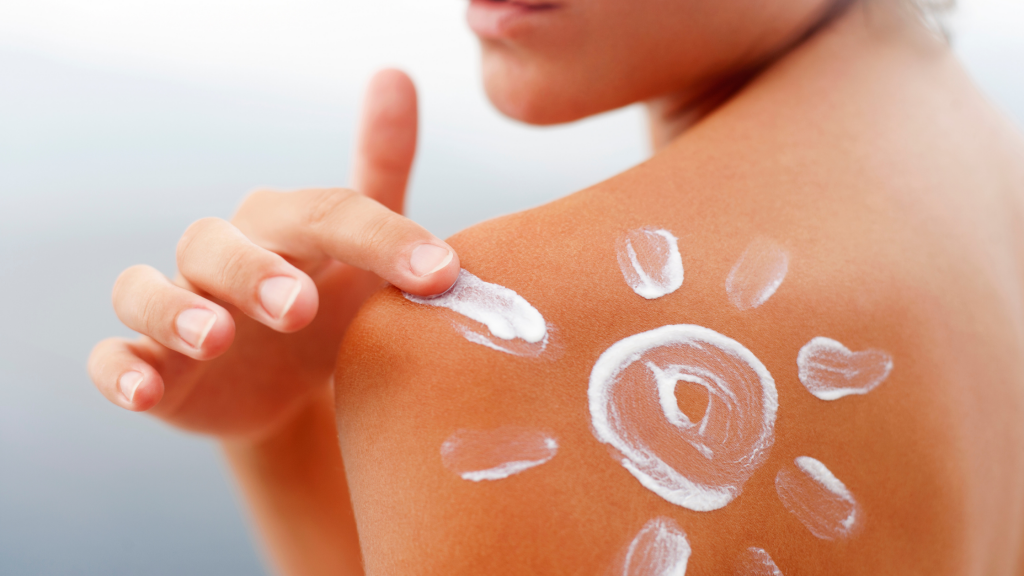
Perhaps you can call me a sunscreen bully because I constantly tell my clients to wear it daily before going out, even on a cloudy day. I slather a generous amount on my face and body every morning. It’s always best to protect ourselves from the dangerous UV rays of the sun and from the risk of skin cancer. Now I hear from the news that sunscreen actually causes cancer. What’s going on! And should I freak out already?
Benzene, a colorless liquid that is known to be carcinogenic has been found in some sunscreens and after-sun products by Valisure, an online pharmacy and lab, most of them spray-ons. It’s important to note that benzene is not an ingredient in sunscreen, and Valisure’s petition for a recall of these products suggests that the findings are a result of contamination somewhere in the manufacturing process.
Here’s what changes you can make to stay safe.
With summer in full swing, sunscreen is a necessity for everyone. Beachgoers often reach for aerosols because they are easier and less messy to apply than creams so when their favorite brands are suddenly unavailable there can be a confusing scramble to find a replacement.
Furthermore, the discussion about whether anything is really safe reoccurs, and this leaves people open and vulnerable to sun damage and potential skin cancers. Being in the skincare industry as a fulltime aesthetician, I definitely think it’s not an option to skip on sun protection most especially in the summer.
- Pick a sunscreen that wasn’t contaminated. The majority of products tested — over 200 of them — had no detectable amounts of benzene, and uncontaminated sunscreen should continue to be used.
- Check and choose formulas for safety. As far as formulation goes, there are two kinds — mineral based with zinc and titanium, and chemical blends that contain actives like octinoxate and homosalate. Very often both formulas contain other anti-inflammatory and anti-oxidant ingredients like aloe, green tea, lindera root, arnica and pomegranate, a great source of vitamin C. If you have very sensitive skin or suffer from rosacea, use a mineral based formula. Avoid oxybenzone, an ingredient that may behave like estrogen. Oxybenzone penetrates the skin easily and can disrupt the hormonal system. Look for products that along with zinc oxide, contain 3 percent avobenzone or Mexoryl SX. They protect skin from harmful UVA radiation.
- Avoid sprays and aerosols. They cloud the air with tiny particles that may not be safe to breathe particularly when used on children. And remember, a few blistering sunburns in childhood can double a person’s lifetime chances of developing serious forms of skin cancer. Keep infants under 6 months out of direct sun and well covered and shaded at all times. Their skin is not yet protected by melanin. It is important to note that any SPF with a higher protection factor of 30 only provides 1–2% extra protection and a much higher possibility for irritation.
- Apply sunscreen liberally at least 30 minutes before leaving the house and layer twice waiting 15 minutes before second application if possible. This ensures a more thorough covering. (Consider any protection contained in make-up a bonus and not a main source of protection.)
- Get your skin checked annually by your dermatologist. Men ignore sun safety at their peril. In 2021, the American Cancer Society estimates about twice as many American men are expected to die from melanoma as women. Surveys show that 48 percent of men report routine sun avoidance, compared to 68 percent of women.
- Slop on sunscreen and reapply it often, especially if swimming and sweating a lot. If it doesn’t smell right or feel right find another by using these guidelines.
- Wear a hat and sun protective clothing. And if possible, seek shade between 10 a.m. to 4 p.m.
Sunscreen is still a very important, effective, and a safe, scientifically-based way to prevent the harmful effects of the sun. Well, I guess I will be a sunscreen bully for life.
For more skincare tips, call us at Skinsense Wellness at (323) 653–4701, or check out our other blogs on Medium. And for skincare services, please visit us at 8448 W. Third Street, Los Angeles, CA 90048. We have re-opened our doors and are happy to welcome you all back.
“The only ex I need in my life is my exfoliator.”
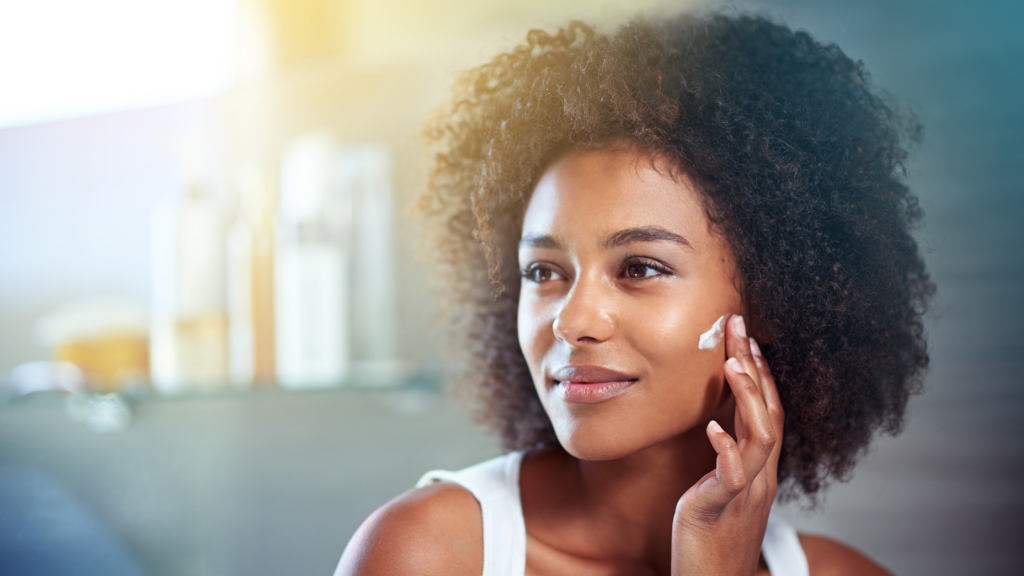
Did someone say New Kids on the Block? Yes, there’s a new kid on the block… the skincare block, that is. And while it’s not the popular boy band of the 90’s it has uh-oh-oh!!! the Right Stuff. They are Polyhydroxy acids (PHAs) and are considered “cousins” of alpha hydroxy acids (AHAs). They also happen to be one of the latest trendy beauty ingredients touted to banish fine lines.
What are they?
PHAs are chemical exfoliants, often used to remove the unwanted cells on the skin’s surface resulting in a more even skin tone and texture. The most common PHAs are galactose — a naturally occurring sugar that skin uses to synthesize collagen, lactobionic acid — derived from oxidized lactose (milk sugar), and gluconolactone — a powdery substance extracted from gluconic acid, found in animals and corn.
What do they do?
PHAs are a chemical exfoliant. And exfoliation helps to slough away dead, dull-looking skin resulting in reduced hyperpigmentation and improved skin texture. They are related to alpha and beta hydroxy acids but because they are formed from larger molecules, they penetrate the skin more slowly and without irritation.
PHAs hydrate skin. They support the skin’s barrier function, which locks in moisture and reduces the appearance of fine lines and wrinkles.
PHAs also help skin-care ingredients penetrate deeper into the layers of your skin, thus boosting their efficacy.
And, PHAs have antioxidant and humectant properties that help undo and prevent UV and pollution-induced free radical damage to collagen and skin resulting in an anti-aging effect. Over time this can soften fine lines and wrinkles.
Wow!!! Sounds like another great tool for the skincare toolbox.
Here’s a recap on their benefits:
- They’re Gentle Giants: They stay on the surface where they do a great job without traveling quite as deep as a straight-up AHA.
- Non-irritating: If you have sensitive skin, you’ll probably be able to apply a PHA with little-to-no stinging or irritation.
- Keep Skin Moist: PHAs are humectants (meaning they retain moisture reserves) and offer a great way to capture that healthy glow!
- They’re Anti-aging: These acids may be best known for their exfoliation properties, but their real claim to fame should be that they come armed with tons of anti-inflammatory and antioxidant properties.
How do you apply them?
PHAs are used in a wide selection of products, and in a few different ways. They are best applied to the skin at night to give them sufficient time to loosen the bonds between the outermost epidermis. They can be incorporated into any product type — liquid exfoliant, toner, mask, or moisturizer, which can be layered on top.
PHAs can also be combined with retinoids when treating acne or photoaging but be guided by your skincare professional when using PHAs this way to avoid any irritation.
A lot of AHA solutions will have PHAs in them in order to clean up the surface-level debris AHAs miss. PHAs are also added as an extra exfoliating factor to a non-exfoliating product like a cleanser so that dead skin cells are washed away when rinsed off. And PHAs are often the main ingredient and selling point.
If you’re looking for a natural, nontoxic compound that could positively influence cell turnover and keep your skin clear and healthy, PHAs might be the way to go!
For more skincare tips, call us at Skinsense Wellness at (323) 653–4701, or check out our other blogs on Medium. And for skincare services, please visit us at 8448 W. Third Street, Los Angeles, CA 90048. We have re-opened our doors and are ready to welcome you all back.
“All you need is love but a little chocolate now and then doesn’t hurt.”
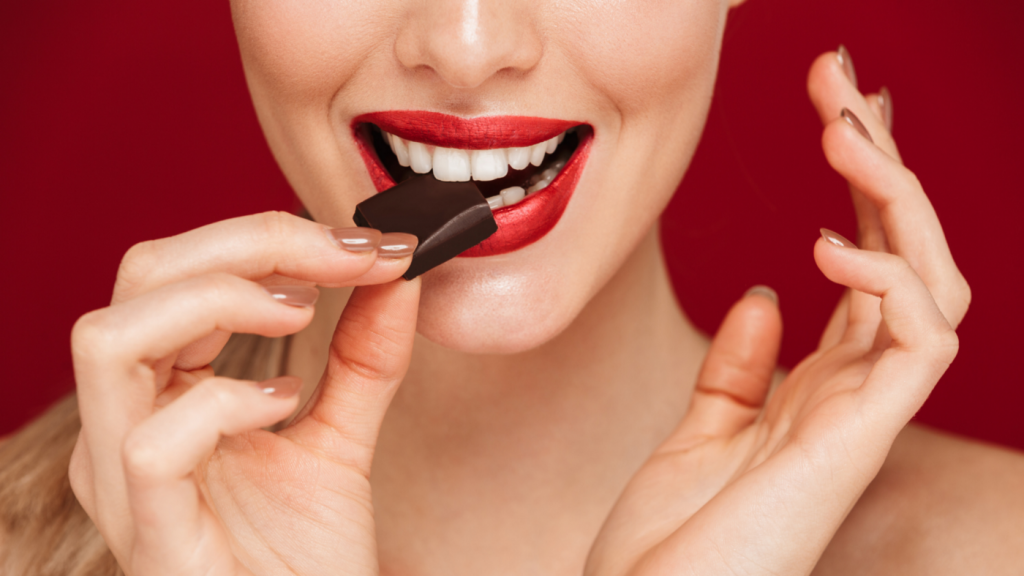
Hi, my name is Marion Simms… and I’m a chocoholic.
In America, we love any excuse to eat a lot of chocolates, Valentine’s Day being one of them. Who can refuse those sweet treats in heart-shaped boxes? If your chocolate consumption concerns you, then it’s worth examining what the impact of all that indulgence will have on your skin.
While it’s true some women may notice a breakout a few days after eating a chocolate bar, sugar is to blame in this case, not chocolate. A diet high in fat and refined sugars, like those found in candy and chocolate, can kick sebum production into high gear and trigger inflammatory responses in the body — both of which are known to increase the risk of breakouts.
To get some clarity let’s start with a couple of interesting facts. A lethal dosage of chocolate for a human being is about 22 lbs (or 40 bars of Dairy Milk). On the other hand, one Smartie or an M&M would be enough to kill a robin or a blackbird. And if you eat a chocolate bunny every day you obviously run the risk of becoming uhm… well rounded.
However, David Asprey in his Bulletproof blog, explains many benefits of chocolate. Here are a few of them…
- Chocolate can improve your mood, cognitive performance and give you an energy boost.
- It is good for your cardiovascular health because of the polyphenols in cacao which can increase HDL cholesterol (or good cholesterol).
- And chocolate can help you maintain glowing skin by modulating healthy blood flow.
In a study, two groups of women consumed either a high flavanol (dark chocolate) or low flavanol (milk chocolate) cocoa powder for a period of 12 weeks. While the low flavanol group showed no change in markers of skin health, subjects in the high flavanol group had on average 25% reduction in UV-induced erythema (sunburn) after exposure to a solar simulator. The high flavanol group also recorded increased skin density and thickness, as well as better hydration and less transepidermal water loss — the evaporation of water through the outer layer of the skin.
Milk chocolate is definitely high in sodium and cholesterol but contains more calcium. Dark chocolate has less calcium but also much less cholesterol and sodium.
One of my favorite facials is a chocolate enzyme treatment which includes a blast of oxygen as well as an application of pure cacao powder. With the combination of the antioxidants (when you indulge!) working from the inside and the brightening, tightening benefits happening on the outside, you are guaranteed a healthy, glowing complexion.
As my dear Granny used to say: “A little of what you fancy does you good”. I say enjoy a moderate indulgence of darker chocolate — anything above 65% cacao — and reap the benefits of this much-loved treat. When eaten in the right quantity it can actually be considered a health food.
“Chocolate comes from cocoa, which is a tree. That makes it a plant… so chocolate is a salad.”
For more skincare tips, check out my other blogs on Medium, call us at Skinsense Wellness at (323) 653–4701 or visit our website. We offer a virtual consultation, in-salon treatments, and home service facials to our valued clients.
“I guess chemistry is just another word for love.” — Scott Thompson
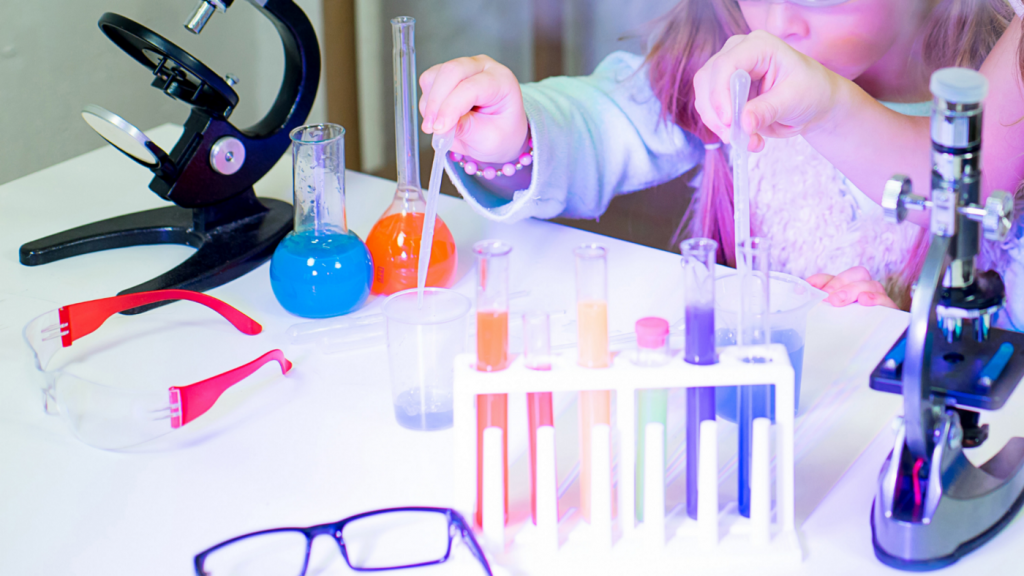
Do you remember in 7th grade science where we would test vinegar and milk with a litmus paper and the paper would turn light pink or purple? Depending on the color that the paper turned that was it’s pH value. That’s how we first learned about the pH scale — the acidity and alkalinity of substances. We learned too how all these different acids and alkalines work together in our environment as well as our bodies to keep things running smoothly. Well, it’s the same thing with skin. That’s why it is not unusual to talk about the pH level of a skincare product.
The letters pH stand for potential hydrogen, as hydrogen is the element that controls the levels of either alkalinity or acidity in a formulation. Acidic products range from 0–6.9 and are often used to exfoliate or peel the skin; alkaline products range from 7.1–14 and can be used in cleansers or to neutralize acidity. Very often moisturizers are formulated to be neutral (a pH of 7) to bring the skin back into balance. Too much acid or alkalinity is irritating for the skin, so the pH is always carefully calibrated.
The optimal pH value of skin on most of our face and body lies between 4.7 and 5.75. As mentioned above a pH of 7 (that of pure water) is considered neutral. Anything below that is acidic and above it alkaline, so skin’s natural pH is mildly acidic. Skin maintains its barrier best around 5.5 — slightly acidic. At the ideal pH (5.5), the skin is able to maintain a good barrier (the acid mantle) and, together with natural oils, moisturizers and bacteria, function as a true protective defense organ.
More recently, the principle of pH balancing has been applied to our general wellbeing. This holistic approach believes that the foundation of healthy digestion is built on a simple eating system that maintains an ideal acid/alkaline (pH) balance in the body. 70% of the immune system is based in the abdomen and 90% of the tryptophan needed to make serotonin for the brain — essential to ensure we feel good — is made here. So in order to live a long and happy life it obviously pays to keep our abdomens happy!
As we all know, in the case of romance it is often quoted “the way to a man’s heart is through his stomach.” But what we are talking about here may not involve the foods and habits we are recommending!
And how does all this reflect in the skin? Well, too much acidity triggers eczema, inflammation, acne, boils, rosacea and wrinkles. So all of these conditions could be greatly improved by maintaining a more alkaline system. Obviously, exercise and relaxation are essential as well as drinking the right amount of water. Men need more water than women on a daily basis. If you eat plenty of vegetables and two or three fresh fruits a day, you can fill half your required fluid quota easily.
How do we do that? The suggested pH ratio would be a diet of two-thirds alkaline and one-third acid-forming foods. This takes some adjustment. So, to take a step in the right direction, let’s outline a few alkaline foods that we can incorporate in greater quantities and some acidic foods we can eliminate.
Raw, green leafy vegetables like chard, kale and spinach are all excellent alkaline-rich foods. So are avocados, celery, cucumbers, tomatoes, peppers, broccoli, coconut, cherries, grapefruit, lemons and watermelon. A healthy way to start and end each day with an alkaline system, for example, would be with a cup of warm water flavored with half a lemon. Also adding turmeric, garlic, ginger and flax seeds to your diet along with a good probiotic will keep the gut healthy and the skin glowing.
Things to avoid would be white flour, coffee, red meat, too much alcohol and artificial sugar. Also minimize your intake of fermented foods — they are acidic in nature. Stick to moderate amounts of sauerkraut, kimchi and pickles. These will add vitamins to your diet and anti-inflammatory benefits too.
For more information on the science behind beautiful glowing skin, call us at Skinsense Wellness at (323) 653–4701 or visit our website. We offer a virtual consultation and home service facials to our valued clients. Let’s talk!
“If God wanted us to fly, he would have given us tickets.” — Mel Brooks

I love travel more than anything but flying… not so much. Flying is exhausting, it makes me feel icky, squished, and I get grumpy. To be honest, if only I could teleport, I would! No one loves long flights. And the things that flying does to my skin… it makes it very dry and dehydrated, prone to breakouts, and at times puffy.
Here’s how it actually sabotages our skin.
On the ground, depending on where you live and the time of year, humidity can range from 25% to almost 100%. The relative humidity in a plane is around 10%. When our environment — both inside and out — is low in humidity, the air, in turn, lacks moisture, which can cause dryness and discomfort. This dryness can occur anywhere affecting the face, lips and hands.
The low humidity in the cabin not only affects those with dry skin. In excessively dry situations, our oil glands can overcompensate, causing increased oil production. When this happens to an already oily complexion, the excess oil can combine and stick to any build-up of dead skin cells and other impurities lingering on the skin’s surface, which can then clog pores and lead to post-flight breakouts.
On the plane we are much closer to the sun and still very exposed to UV light particularly if we are seated by the window. Remember there is no cloud coverage at that altitude and no atmospheric protection.
Plus, dehydration paired with sitting in one position for a long time can cause fluid retention leading to puffy, swollen-looking skin, especially the feet.
With masks still a part of the travel protocol in the foreseeable future, even the most resilient skin can suffer.
So here are a few tips to help your skin survive flights.
- Get a really deep cleaning, hydrating facial 3–5 days before you leave. At our salon we offer the Hydradermie, a deeply penetrating galvanic treatment that does it all.
- The night before a flight, treat your skin to a hydrating mask. Slather on body lotion and condition your hair. Do the same thing the night of your arrival and if the skin has become cranky during the flight, apply a clay mask that has a more corrective, rebalancing formula.
- Before boarding, make sure your skin is super hydrated — eye crème, serum, moisturizer and sunscreen. And if you are comfortable doing this, lightly dust on a mineral powder for extra protection.
- If you have oily skin use a light serum after you have cleansed and toned, and any corrective topicals (for example, salicylic acid, topical antibiotic) before putting on your sunscreen and mineral powder.
- Use a calming mist with hydrating ingredients that can be spritzed liberally without the risk of drying. Do not use water to spray on the skin during the flight, it only dehydrates it.
- Don’t forget to drink copious amounts of water to hydrate from the inside out. Avoid alcohol, tea and coffee and order a light meal.
- We now know that airborne coronavirus particles do not stick to surfaces as we once thought. However, I would still recommend sanitizing your seating area when you get on the plane.
- During the flight sanitize your hands regularly and wash and use hand sanitizer every time you use the facilities. Keep your hands off your face as much as possible. And refrain from cleansing and re-applying during the flight except hand crème and lip balm. (Pack small containers so that security does not confiscate them).
- One final hurdle to clear is baggage claim. Use hand sanitizer after collecting your luggage. And once you have reached your destination, take a shower or bath to start your trip clean and refreshed.
Happy Travels and stay safe!
For more skincare tips, visit our website, call us at Skinsense Wellness at (323) 653–4701, or check out our other blogs on Medium. And for skincare services, please visit us at 8448 W. Third Street, Los Angeles, CA 90048. We have re-opened our doors and are ready to welcome you all back.
“Out of all my body parts, I feel like my eyes are in the best shape. I do at least a thousand eye rolls a day.”
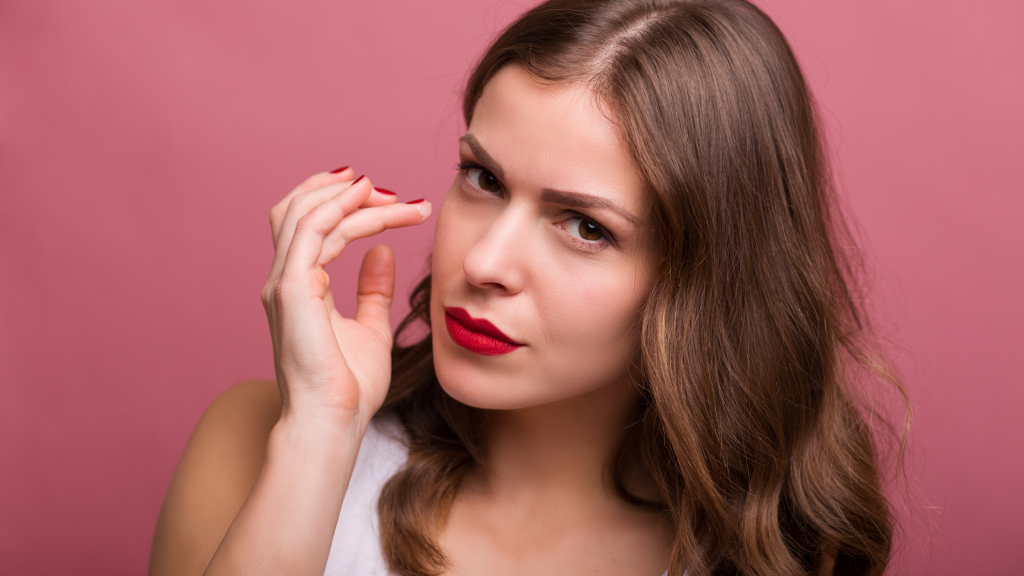
Making eye contact with everyone I meet tells me a lot about the person. I find it fascinating and I am certainly not alone in this. The results of a survey in the U.S., taken to find out what men and women notice first about the opposite sex, put eyes at the top of the list. This does not surprise me. And as an aesthetician, I can tell if the person cares enough to include the skin surrounding the eye area in their daily skincare routine.
This area is thinner, contains fewer oil glands and muscle tissue. It’s also delicate and often very sensitive to the environment and anything you put on it. Lack of sleep, exercise, and eye strain show up as dark circles, wrinkles and puffiness and eyes are the first area of the face to show tiredness. Layer seasonal allergies on top of all this and eye skincare can be a nightmare!!
Here are a few eye-skincare tips to keep them bright and young-looking.
1. Keep them moisturized. Cleansers and moisturizers for the face do not cut it. They are often too heavy and can cause those annoying little white bumps (called milia,) irritation and swelling. Eye creams, on the other hand, are often formulated with enough active ingredients that may help reduce wrinkles and fine lines without any irritation. Some ingredients to look for are:
a. Golden root, argania spinosa, Summer snowflake bulb, caffeine, hydroquinone, kojic acid, and vitamin C to reduce the appearance of dark circles.
b. Caffeine, green tea and coffee berry polyphenols, dipeptide-2 (Eyeliss), and willow herbs to help reduce puffiness.
c. Biopeptides to tighten.
d. Evening primrose and hyaluronic acid to hydrate.
e. Tuberose to revitalize tired eyes.
f. Argan oil, retinol, and peptides to stimulate collagen production resulting in plump and lift.
g. Antioxidants to help reduce free radicals triggered by UV rays, smoking, and pollution
2. Be gentle. When applying skincare products, start on the lids going from the inner to the outer area, circling under and into the side of the nose. Same with cleansers which are best used on a damp cotton pad. We know waterproof mascara can be challenging to remove but harsh makeup removers should be avoided.
3. Wear sunscreen. When applying sunscreen, don’t forget the upper eyelid. This is one of the most overlooked areas. Also consider investing in a pair of sunglasses that offers UV protection. This can help protect not only your eyes but also the skin around them from unwanted UVA and UVB rays.
4. Get a spa treatment. There are some great treatments that target the eye area using thermal therapy and microcurrent. These treatments use super light serums that penetrate with the help of the heat and electrotherapy. And when done consistently, can make the eye area look toned and firm.
5. Keep a healthy lifestyle — get enough sleep, eat healthy, and exercise. Try regular exercise that involves hanging upside down — yoga and downward dog for example. They can really make a difference because they defy gravity and reverse the blood flow.
6. Retire devices that emit blue light — computer, cellphones, televisions, one hour before bedtime. And consider using blue-light blocking glasses if your work demands hours of screen time. Blue light, known as high-energy-visible light (HEV), not only strains the eyes but can also accelerate the aging process and cause dryness.
Lastly, if topical treatments simply aren’t working, consider nonsurgical options like botox, fillers, and laser resurfacing.
For more skincare tips, call us at Skinsense Wellness at (323) 653–4701, or check out our other blogs on Medium. And for skincare services, please visit us at 8448 W. Third Street, Los Angeles, CA 90048. We have re-opened our doors and are ready to welcome you all back.
“If you’re feeling blue try painting yourself a different color.” — Hannah Cheatem
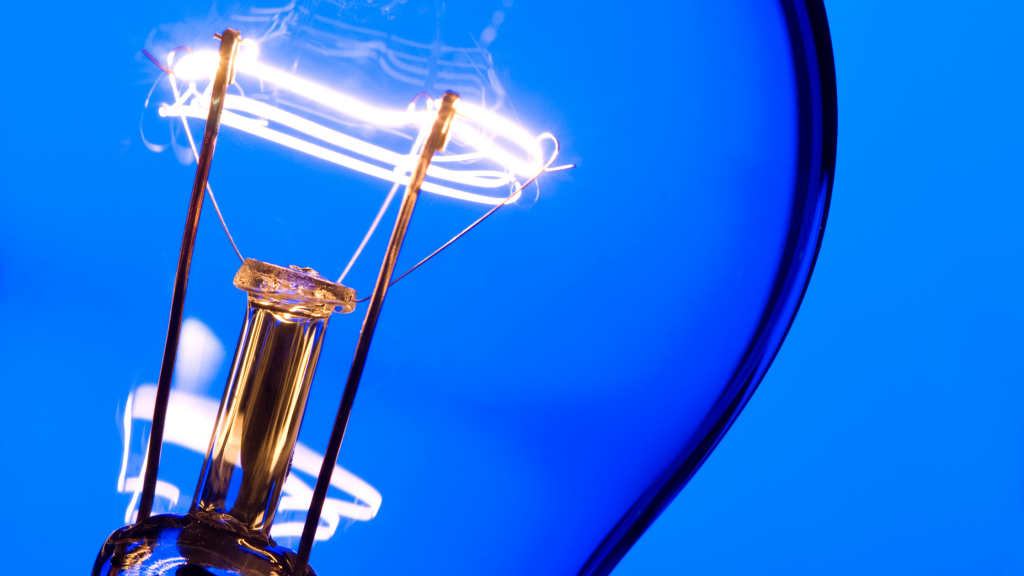
When I think of blue light, I am reminded of the time I was driving on Wilshire Boulevard at night and from my rearview mirror I saw the flashing lights of a police car signaling me to stop. My violation — over speeding. That was terrifying! Never will I do it again.
But we are talking about a different kind of blue light. This particular blue light is a form of visible light, also known as high-energy visible (HEV) light. It is one of the several colors in the visible light spectrum, the others are red, orange, yellow, green, indigo, and violet. Blue light represents about one third of all visible light — a pretty high percentage — so blue light is practically everywhere.
By far the largest source of blue light is from the sun itself. But we also get it from artificial light sources such as LED light bulb, fluorescent bulbs, your flatscreen tv, your laptop, your tablet, your cellphone, all these digital devices that you have in your hand and keep in your house.
Both natural blue light from the sun and artificial blue light during the day can boost attention, reaction time, and moods. But studies to date show blue light from electronic devices can lead to changes in your skin cells, including the production of free radicals and break down of collagen. This speeds up the aging process — wrinkles, fine lines, dilated pores, and loss of firmness. Even exposures as short as 60 minutes can trigger these changes. Too much blue light could also lead to pigmentation especially in deeper skin tones.
The other concern about blue light is it’s ability to disrupt your sleep cycle, also called the Circadian rhythm. It does this by suppressing melatonin, a protein necessary for promoting restful sleep. And we know how vital our beauty sleep is. Here’s how to protect your skin from blue light…
During the day:
- Use a Vitamin C serum every morning.
- Wear a mineral sunscreen that contains Zinc Oxide, with an SPF 30. It also helps protect skin against UV rays — which pose a serious threat to skin. Sunlight and electronic devices reach skin both indoors and out, so it’s important to protect your skin even if you’re indoors most of the day.
- Add antioxidants to your diet, brightly colored fruits and vegetables, and take vitamin supplements to counter free radical damage that occurs from UV and visible light.
- And expose yourself to lots of bright light during the day — this will keep your circadian rhythms functioning properly and help you sleep longer and more deeply.
At night
- Use dim red lights for night lights. Red light does not interfere with melatonin production as much.
- Don’t use bright screens two hours before bed. This may be a practice that is hard to break. But better to read a book (an actual paper version) before you go to sleep.
- If you work a night shift or have to use lots of electronic devices in the evening, consider wearing blue-blocking glasses that filters the blue light wavelength. These glasses are now readily available online or at most reputable opticians and are very reasonably priced.
- Lastly, install blue light filter apps or activate the night shift/night mode on your smart phones, tablets, and laptops.
For more skincare tips, check out my other blogs on Medium or call us at Skinsense Wellness at (323) 653–4701. And for skincare services, please visit us at 8448 W. Third Street, Los Angeles, CA 90048. We have re-opened our doors and are ready to welcome you all back.
“I finally figured out what I wanted to be when I get older… YOUNGER.”
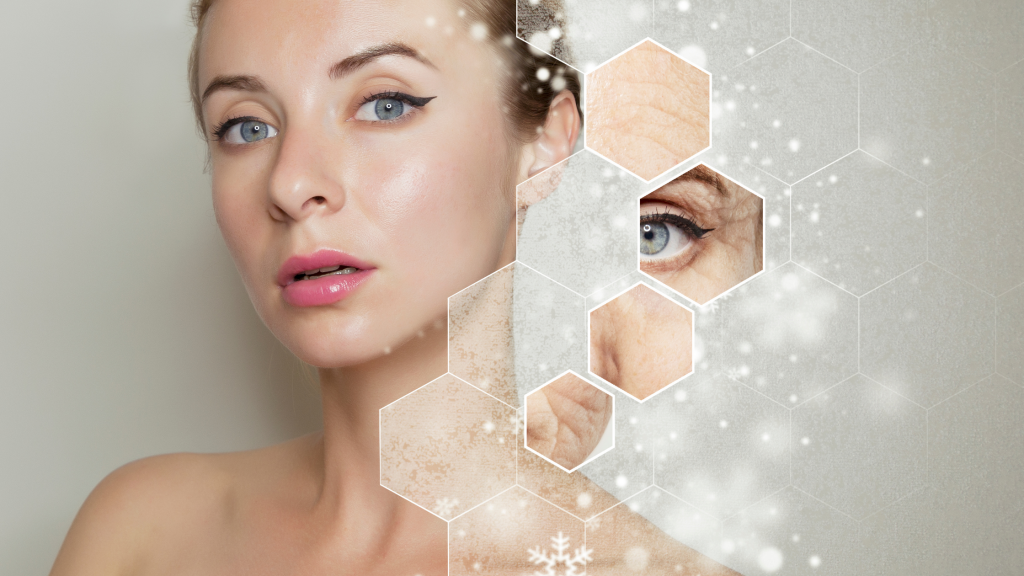
I have resolved to grow old gracefully. What do I mean by that? Apart from lying about my age (which oftentimes, I don’t remember anyway), I am committed to taking care of my skin and my overall health — none of the harmful products and treatments. And I’m just as committed to taking care of my client’s skin, keeping it healthy with that youthful glow.
On the subject of youthful-looking skin, at Skinsense we’re obsessed with the anti-aging benefits of microcurrent, and we use it a whole lot. It has been a long-standing star on our electrical stage and so I thought it might be helpful to talk about what it does and how it compares and works with that now (in)famous muscle relaxer, Botox.
Renowned skin physiologist and cosmetic chemist, Dr. Pugliese, maintains that micro-current creates lots of activity on a deep, dermal level where all our serious aging problems begin. It stimulates the fibroblasts, cell of connective tissues, which significantly increases the production of collagen and elastin — the skin’s structural proteins — and also GAG’s — glycosaminoglycans — the viscous material in which protein is embedded.
The other great advantage of using micro-current is that it boosts the production of ATP — adenosine triphosphate — the glucose type fuel responsible for all cellular activity. Other benefits include promoting waste removal, healing, and circulation. And not often mentioned but something that we have noticed with using micro-current at our salon is its ability to calm rosacea and irritated skin.
The result… a more youthful, even textured and plump complexion.
Microcurrent has been used for decades to treat everything from wounds, paralysis, migraines, twitchy eyes, and chronic pain. It operates on a sub-sensory level, which allows the electrodes to glide over the skin with little discomfort. Maybe sometimes a slight pulling or twinge in the dental and neck zones, but the intensity can be adjusted to suit the client’s pain tolerance and can work on the lowest frequencies with great success.
A series of six microcurrent treatments booked bi-weekly or weekly is generally recommended at first to start re-educating the muscles. Regularity of treatment obviously depends to some degree on each clients’ availability. After the first series, micro-current can be added to other facial routines or done every few months to tighten and boost muscle tone.
We recommend clients wait two weeks after receiving Botox before having micro current to avoid any product transference or migration.
Botox on the other hand, does not work directly on the muscles. It binds to the neurotransmitters preventing them from signaling muscles to contract. Done once or twice a year it can knock out expression wrinkles very effectively. But when done too often, it can cause muscular atrophy, where the muscles become slack. This is where electrical stimulation from microcurrent devices help.
How effective are at-home microcurrent devices?
Although not as potent electrically and considering they are being used by untrained hands, if used consistently, these tools can certainly deliver the promised benefits.
Along with a healthy lifestyle and a good product regimen, including topicals that contain peptides and a variety of anti-aging ingredients, microcurrent can restore fullness and muscle tone while Botox can soften expression lines.
Overall, it’s the perfect anti-aging skin treatment partnership. It allows us to loosen gravity’s grip just a little bit more!
For more skincare tips, check out our other blogs on Medium or call us at Skinsense Wellness at (323) 653–4701. And for skincare services, please visit us at 8448 W. Third Street, Los Angeles, CA 90048. We have re-opened our doors and are ready to welcome you all back.



